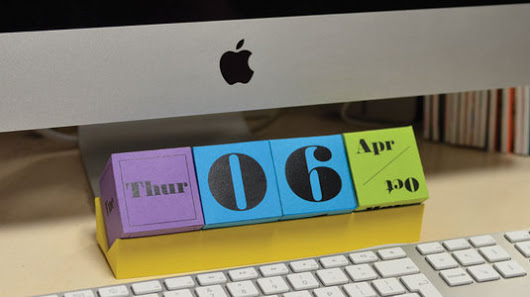7 ways to work smarter not harder
Spend more time being creative with these top tips for improving your project management skills.
It isn't the sexiest side of design, but solid project management facilitates creativity. After all, the faster you clear the essential business side of things, the more time you have for the creative.
Better time management is part of it (read nine tips here), but there are many other things you can do to. Here are seven tips for working more efficiently...
01. A tidy desk

Whether or not the old adage is true, a bit of organisation – both physically and digitally – certainly goes a long way. Set up email folders, filing systems and job numbers, and keep on top of them.
Add dates to the start of file names in year/month/day format so that different versions are listed in order, and always name and manage your layers.
Trying to decipher what's going on retrospectively is just a waste of time, and having to go back to the client to ask for files again because a download's expired can be embarrassing.
02. Make milestones
Mark out some clearly defined milestones for different stages of a project, such as first sketches, presentations, approvals and final layouts, and get them signed off. Map these onto your schedule to make sure they're achievable: this is particularly useful for more complex projects.
03. Customise your workspace
Organise your workspace to suit you. It should be second nature: if you're constantly looking for a particular function, it'll chip away at your working time. When you're used to the location of everything it'll free up more of your energy to focus on the project at hand.
Daily design news, reviews, how-tos and more, as picked by the editors.
If you have a laptop, set up a separate monitor and use the laptop for all your panels, leaving your monitor completely free for the design work.
Of course, when you use the laptop on its own the screen will be covered in panels. To work around this, set up two custom workspaces in your design software.
04. Learn shortcuts
One of the quickest ways to speed up your workflow is to set up shortcuts – and learn them. Also, if you repeatedly do certain procedures in Photoshop, why not record them as an action?
05. Project management tools
Staying on top of your workload, tracking time and invoices, tending to your to-do lists and updating your clients are all daily activities that need to be fitted in. Luckily there are a number of affordable, easy-to-use project management tools out there to help you juggle multiple projects and workflows.
Solo, Action Method and Basecamp are just three available options, all of which are set up to help you make your workflow as efficient and painless as possible. Give them a go.
06. Learn the brief
Always get the brief nailed down at the start, and make sure you're on the same page as the client. Agreeing deadlines for different stages helps everyone to be clear on how long everything will take; and pinning down a beginning, middle and end will stop things rambling out of control. Stay realistic when you're under tight time constraints.
07. Back it up
It sounds obvious, but hit Save as often as possible: the last thing you want is for your computer to crash and lose all your work, hours before a crucial deadline. As your project progresses, create a new folder for each key phase and go to File>Save As, using numbers as your filenames.
That way, you aren't just overwriting the file and can shuffle back through versions if you need to double-back on yourself later. Invest in a decent hard drive, too. Your sanity will thank you.
Related articles:
- Top 10 best project management software
- 22 ways to boost your productivity
- The ultimate guide to logo design
